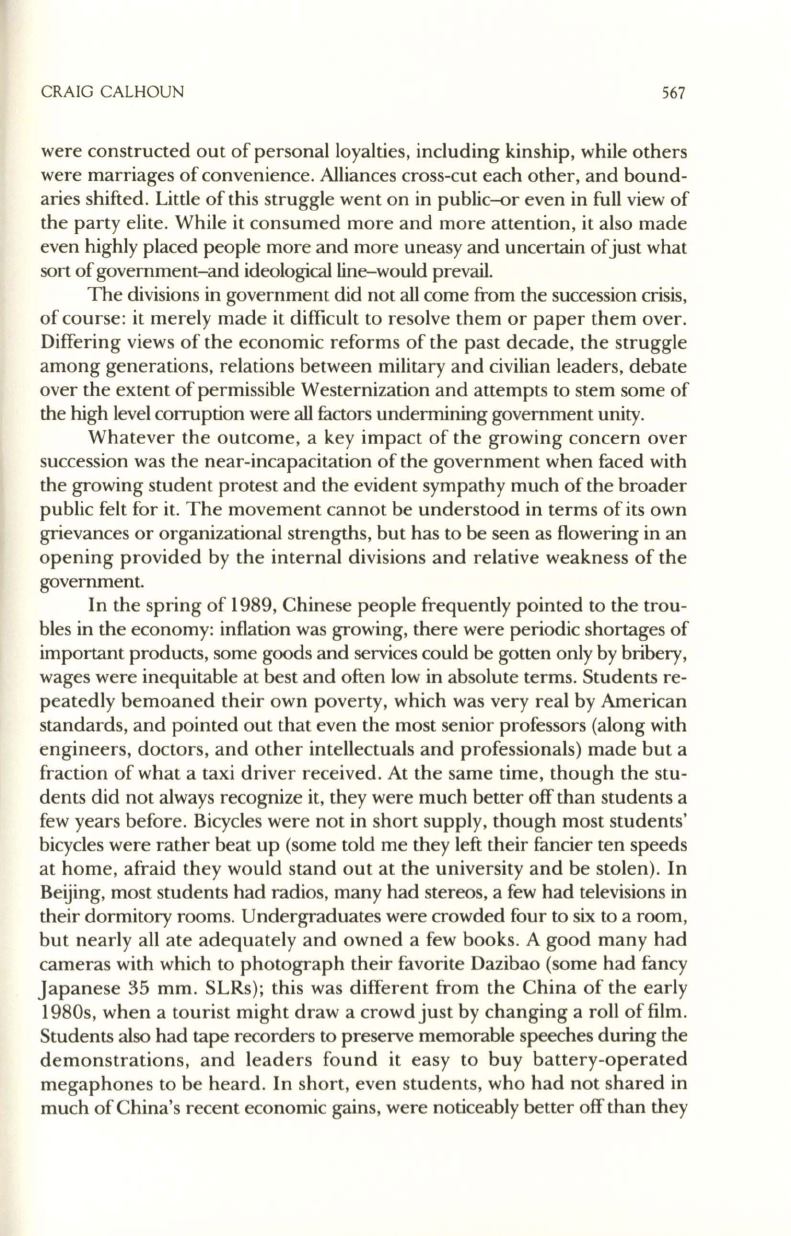
CRAIG CALHOUN
567
were constructed out of personal loyalties, including kinship, while others
were marriages of convenience. Alliances cross-cut each other, and bound–
aries shifted. Little of this struggle went on in public-or even in full view of
the party elite. While it consumed more and more attention, it also made
even highly placed people more and more uneasy and uncertain ofjust what
sort ofgovernment-and ideological line-would prevail.
The divisions in government did not all come from the succession crisis,
of course: it merely made it difficult to resolve them or paper them over.
Differing views of the economic reforms of the past decade, the struggle
among generations, relations between military and civilian leaders, debate
over the extent of permissible Westernization and attempts to stem some of
the high level corruption were
all
factors undermining government unity.
Whatever the outcome, a key impact of the growing concern over
succession was the near-incapacitation of the government when faced with
the growing student protest and the evident sympathy much of the broader
public felt for it. The movement cannot be understood in terms of its own
grievances or organizational strengths, but has to be seen as flowering in an
opening provided by the internal divisions and relative weakness of the
government.
In the spring of 1989, Chinese people frequently pointed to the trou–
bles in the economy: inflation was growing, there were periodic shortages of
important products, some goods and services could
be
gotten only by bribery,
wages were inequitable at best and often low in absolute terms. Students re–
peatedly bemoaned their own poverty, which was very real by American
standards, and pointed out that even the most senior professors (along with
engineers, doctors, and other intellectuals and professionals) made but a
fraction of what a taxi driver received. At the same time, though the stu–
dents did not always recognize it, they were much better off than students a
few years before. Bicycles were not in short supply, though most students'
bicycles were rather beat up (some told me they left their fancier ten speeds
at home, afraid they would stand out at the university and be stolen) . In
Beijing, most students had radios, many had stereos, a few had televisions in
their dormitory rooms. Undergraduates were crowded four to six to a room,
but nearly all ate adequately and owned a few books. A good many had
cameras with which to photograph their favorite Dazibao (some had fancy
Japanese 35 mm. SLRs); this was different from the China of the early
1980s, when a tourist might draw a crowd just by changing a roll of film.
Students also had tape recorders to preserve memorable speeches during the
demonstrations, and leaders found it easy to buy battery-operated
megaphones to be heard. In short, even students, who had not shared in
much of China's recent economic gains, were noticeably better off than they


